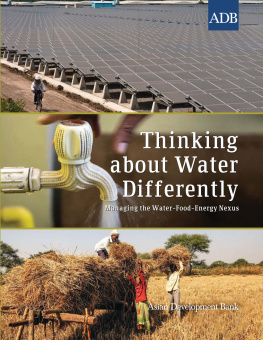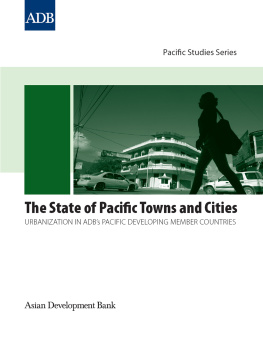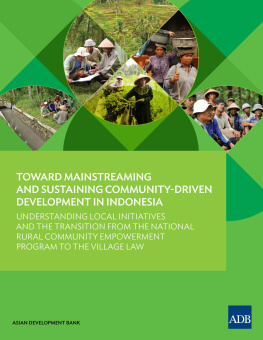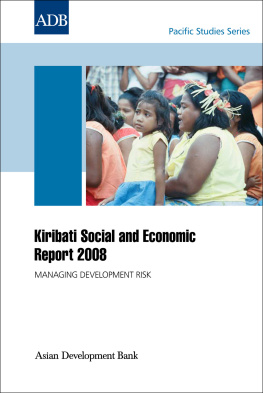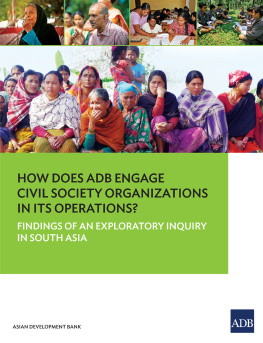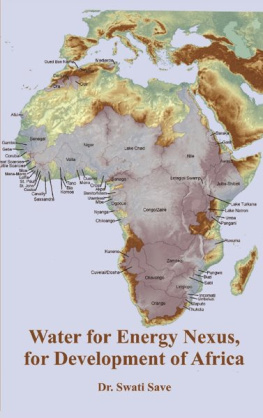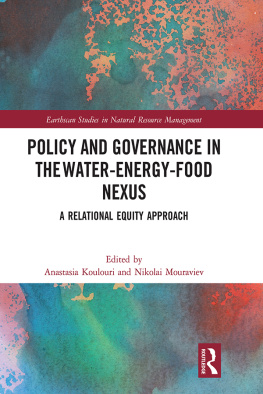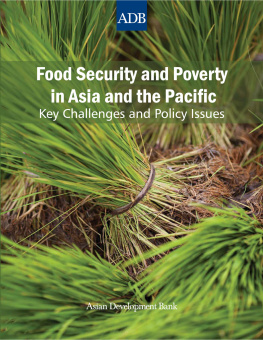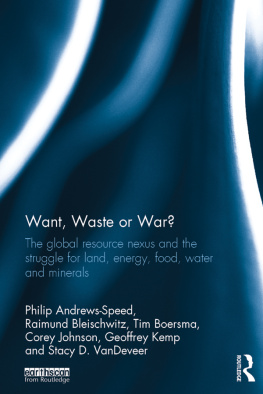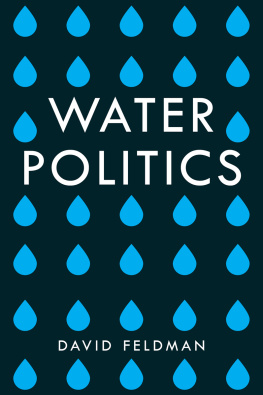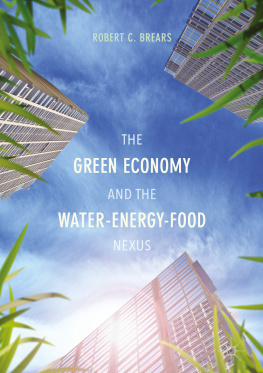2013 Asian Development Bank
All rights reserved. Published 2013.
Printed in the Philippines.
ISBN 978-92-9254-252-8 (Print), 978-92-9254-253-5 (PDF)
Publication Stock No. RPT125184
Cataloging-in-Publication Data
Asian Development Bank.
Thinking about water differently: Managing the water-food-energy nexus. Mandaluyong City, Philippines: Asian Development Bank, 2013.
1. Water. 2. Food. 3. Energy. I. Asian Development Bank.
The views expressed in this publication are those of the authors and do not necessarily reflect the views and policies of the Asian Development Bank (ADB) or its Board of Governors or the governments they represent.
ADB does not guarantee the accuracy of the data included in this publication and accepts no responsibility for any consequence of their use.
By making any designation of or reference to a particular territory or geographic area, or by using the term country in this document, ADB does not intend to make any judgments as to the legal or other status of any territory or area.
ADB encourages printing or copying information exclusively for personal and noncommercial use with proper acknowledgment of ADB. Users are restricted from reselling, redistributing, or creating derivative works for commercial purposes without the express, written consent of ADB.
Note:
In this publication, $ refers to US dollars.
6 ADB Avenue, Mandaluyong City
1550 Metro Manila, Philippines
Tel + 63 2 632 4444
Fax +63 2 636 2444
www.adb.org
For orders, please contact:
Public Information Center
Fax +63 2 636 2584
Executive Summary
Concerns about water security have reached the mainstream media, highlighting a significant threat to water availability at the global and regional level, particularly in certain parts of Asia and the Pacific. In fact, economic growth in the region will soon be constrained by water shortages, affecting the reliable production of food and energy. Part of the discussion is in terms of the water-food-energy nexus, that is, the links between the businesses of supplying water, food, and energy.
The evidence for existing and emerging water scarcity has been presented by a wide range of organizations. The 2030 Water Resources Group stated that with the total annual sustainable freshwater supply remaining static at 4,200 billion cubic meters (m3), the annual deficit for 2030 is forecasted to be 2,765 billion m3, or 40% of unconstrained demand, assuming that present trends continue. India and the Peoples Republic of China (PRC) are forecasted to have a combined shortfall of 1,000 billion m3reflecting shortfalls of 50% and 25%, respectively. There is little evidence of changing trends. Signals of scarcity and stress have had little impact on policies, demand, or the market.
On the supply side, there is little room for finding and abstracting more water. In areas with physical water scarcity (including north PRC, south and northwest India, and Pakistan), demand needs to lessen. Elsewhere in Asia, with economic water scarcity (Bangladesh, Cambodia, north and northeast India, Lao Peoples Democratic Republic, Myanmar, Nepal, and Viet Nam), new investment may still be aimed at improving supply-side infrastructure.
However, throughout the region, solutions have to be found mainly on the demand-side. Demand-management studies, conducted at a global level, illustrate the impact and costs for a wide spectrum of measures to reduce demand, whether in agriculture, industry, or municipal water use.
Water for food. The highest social and political significance is the water-food link. Rising food prices, food price spikes, shortages, adverse market interventions, social instability, and food riots are already a reality, and may make governments finally take decisive action on water security. All of South Asia, Cambodia, the Lao Peoples Democratic Republic, Papua New Guinea, and the Philippines have been classified as high food security risks; Afghanistan as extreme risk; and the rest of the region as medium food security risk.

